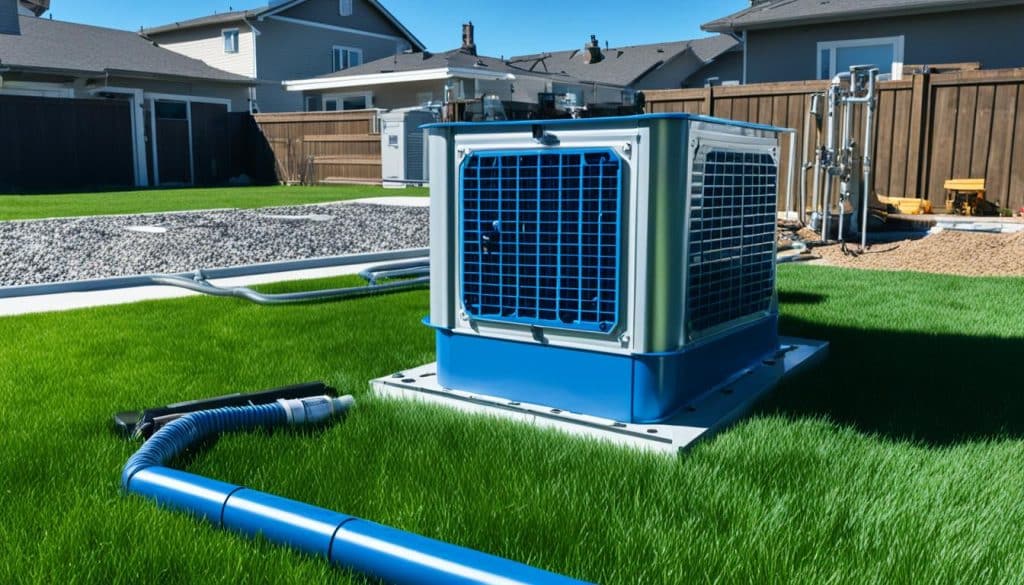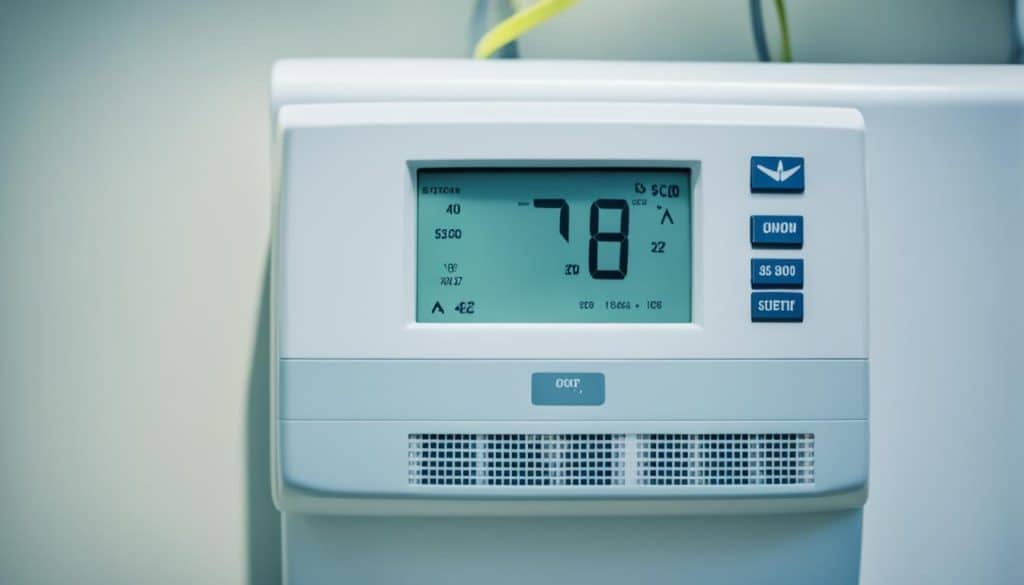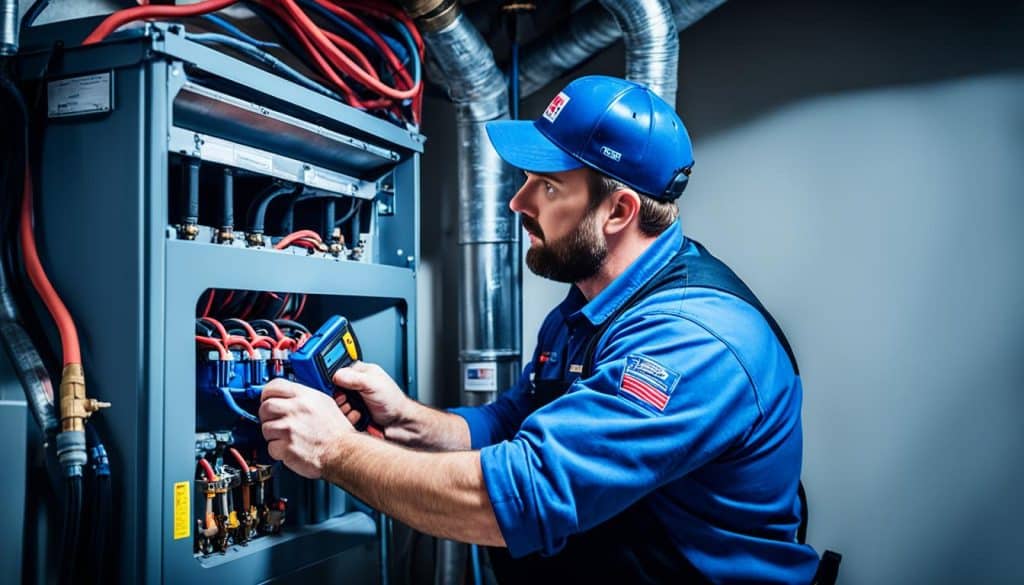Is your home ready for the hot summer months? Installing a central air conditioning system could be the perfect fix. Let’s explore AC Unit Installation: Your Cool Home Solution.
Central air conditioning systems cool your whole home. They keep temperatures steady, clean the air, and lower humidity. With cool air flowing through ducts, every room stays comfy, even when it’s really hot.
When picking an AC unit, you can choose between split systems and packaged units. Each has its own advantages, depending on your home and needs. Platinum Heating & Cooling is an expert in installing AC units for homes and businesses. They offer advice to help you pick the right one for your space.
Key Takeaways
- Central air conditioning systems provide whole-home cooling solutions
- AC units improve air quality and reduce humidity levels
- Two main types of central AC: split systems and packaged units
- Professional installation is crucial for optimal performance
- Platinum Heating & Cooling offers expert AC installation services
Table of Contents
Understanding Central Air Conditioning Systems
Central air conditioning systems keep your home cool and comfy. They come in different types, each with special features. Let’s look at the main types and parts of central air systems.
Split AC Systems
Split AC systems have two main parts. The outdoor unit holds the compressor and condenser. The indoor unit has the evaporator coil and fan. This setup makes cooling efficient and easy to install in various home layouts.
Packaged AC Systems
Packaged AC systems put all parts in one outdoor unit. This is great for homes with little indoor space. It’s a compact solution that still cools your house well.
Key Components of Central AC
Central air systems have key parts. The compressor moves refrigerant through the system. The condenser releases heat outside. Ductwork sends cool air to rooms. The evaporator coil takes heat from indoor air. The fan moves air, and the thermostat controls the temperature. Knowing these parts helps you keep your HVAC system running well.
For homes without ductwork, a ductless mini-split is a good alternative. It cools specific areas without needing a lot of installation work.
Determining the Right AC Unit Size for Your Home
Finding the right AC unit size is key for cooling and saving energy. A system that fits your home well keeps you comfortable and saves money.
Calculating Heat Gain
HVAC experts use special calculations to figure out how much heat your home gains. They look at insulation, windows, and how many people live there. This helps pick an AC with the correct cooling power, measured in tons or BTUs.
Importance of Proper Sizing
An AC that’s too small can’t cool your home well. On the other hand, one that’s too big turns on and off too much, wasting energy and making you uncomfortable. The right size means your system works well, keeping temperatures steady.
Energy Efficiency Considerations
When picking an AC, check its SEER rating. This score shows how energy-efficient it is, with higher numbers meaning better performance. The law says new central ACs must have a SEER of at least 13. Choosing a higher SEER can save you a lot of money over time.
Some people think about getting a heat pump instead of a traditional AC. Heat pumps cool and heat your home, which can save energy all year. No matter what system you pick, making sure it’s the right size and efficient is crucial for good performance and saving money.
AC Unit Installation Process and Timeline
Installing a central air system makes your home cool and comfortable. The process has several steps, each important for the best performance. Let’s explore how to get your new cooling unit ready.
The first step is site preparation. HVAC experts look at your home’s layout and current ductwork. If your home has forced-air furnaces, the ducts might already be ready, making installation easier. But, if you don’t have ducts, don’t worry. Ductless mini-split systems are a great alternative for cooling your home efficiently.
Then, the installation begins. Technicians put in the indoor and outdoor units of your central air system. They connect refrigerant lines and ductwork for good airflow. Finally, they link your new unit to your home’s power.
After setting everything up, technicians test the system. They check all parts, adjust the system, and make sure it works well. A final check makes sure it meets all codes and specs.
Installing an AC usually takes one to three days. The size of your home and how complex the installation is can change this time. Remember, keeping up with maintenance is crucial. Changing filters regularly and getting yearly check-ups will keep your system running well for many years.
Costs and Considerations for AC Unit Installation
Thinking about getting an AC unit? It’s smart to know the costs first. This way, you can plan your budget better. Let’s look at what you might spend on installing an HVAC system and how it could save you money later.
Average Installation Costs
The cost to install an AC unit changes based on your home’s size and the type of system. You might pay between $2,500 and $4,500 for the unit itself. Installation can cost another $3,500 to $7,000, making the total around $6,000-$11,500.
Additional Expenses to Consider
There are extra costs to think about too. Installing or changing ductwork can add $250 to $12,000. Also, remember to include costs for electrical upgrades, permits, and inspections in your budget.
Long-Term Savings with Energy-Efficient Units
Energy-efficient AC units cost more at first but save you money over time. Choose units with high SEER ratings for better energy use. Features like smart thermostats and variable-speed compressors also help save energy.
Keep these points in mind when deciding on your AC unit. A good choice can mean lower energy bills and more comfort for you.
Improving your indoor air through ductwork cleaning and efficient HVAC systems creates a healthier space. Platinum Heating & Cooling is committed to boosting your air quality and comfort at home or work. Contact us at (616) 229-0444 or office@platinumheatingmi.com.
Conclusion
Installing an AC unit makes your home cool and comfy. You have many options like central air, split, and packaged systems. Picking the right one is crucial for your space.
Getting your HVAC system the right size is important for best performance and saving energy. This means your system works well and doesn’t waste energy.
Installing an AC needs careful planning. You must think about how much heat your space gets, how efficient it is, and the costs over time. A well-set up AC makes your home more comfortable and keeps your energy bills low.
If you need help with AC installation, contact professional HVAC services. They can guide you in choosing and setting up the best cooling system for your home. With the right AC, you’ll stay cool and comfortable all year.



